Disclaimer: This post may contain Amazon affiliate links. Sudachi earns a small percentage from qualifying purchases at no extra cost to you. See disclaimer for more info.
What is Kuri Kinton?
Kuri Kinton (栗金団) is an important element of traditional Japanese “Osechi Ryori” (おせち料理) or New Year’s meal. The brilliant golden colour of this dish symbolises wealth and prosperity, praying for good economic fortune in the year ahead.
To make this dish, Japanese sweet potatoes are boiled with “kuchinashi no mi” (Cape Jasmine Seeds) to create a vibrant yellow color, then mixed with sugar, mirin, syrup and candied chestnuts. Although this dish is not technically a dessert, it is very sweet and a firm favorite amongst children and adults during New Year family gatherings.
It is worth mentioning that many osechi dishes have a high sugar or salt content. This is because traditionally, all of the food would be prepared and cooked before the New Year and need to be preserved for the following days. Not only does this allow families to rest and enjoy the first few days of the New Year without the need to cook, but it was also believed that cooking on the first day of the year would offend the kitchen God and bring bad luck.
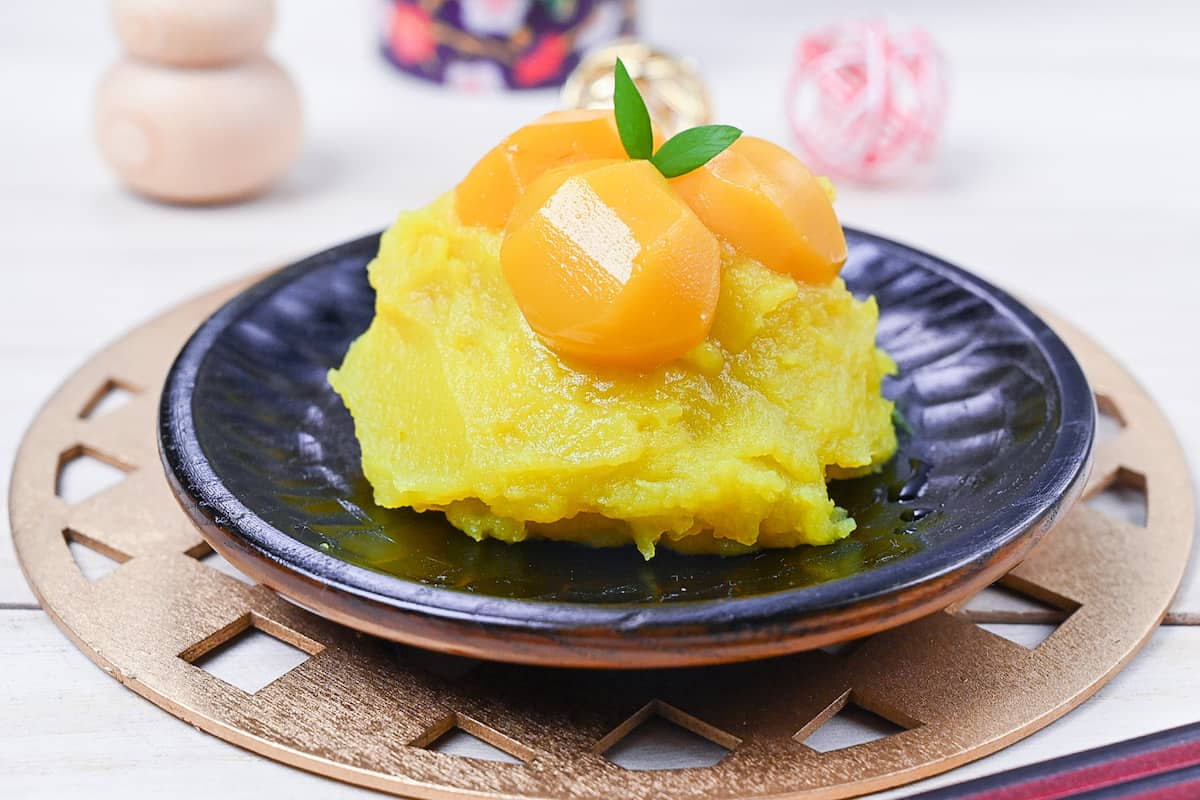
Ingredients & Substitution Ideas
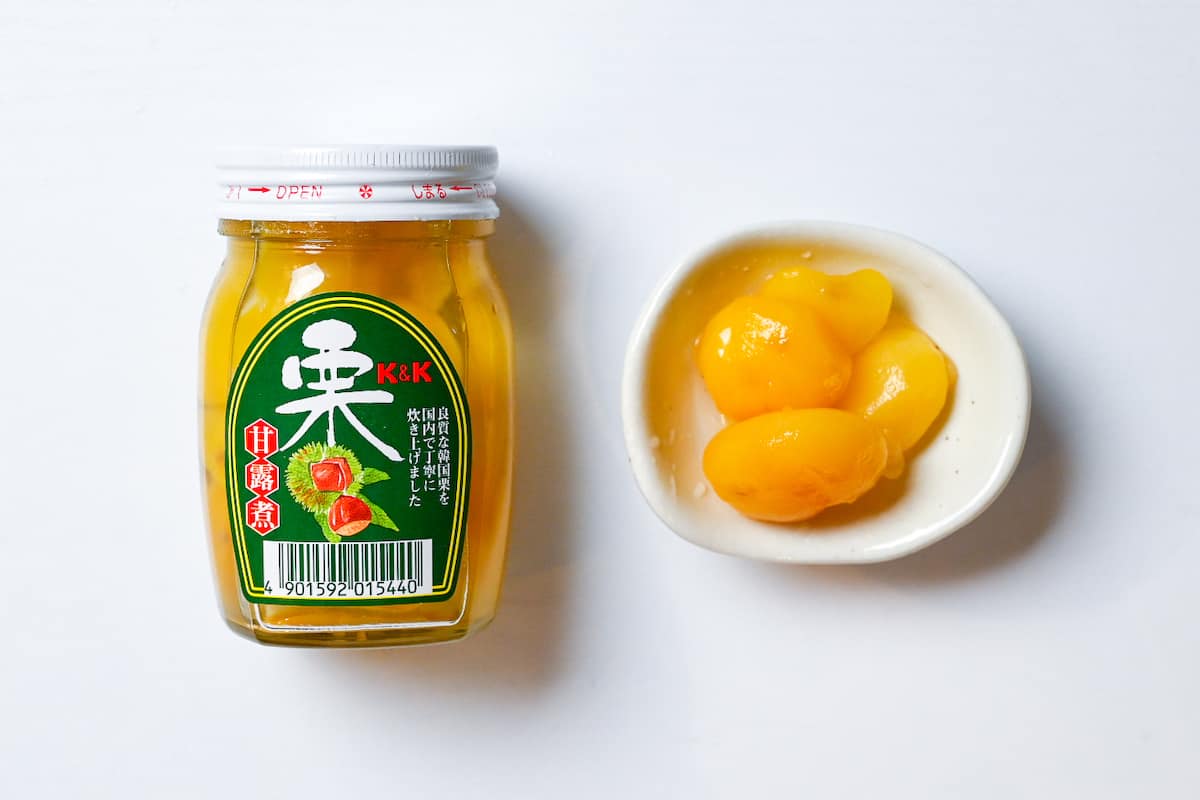
To make my Kuri Kinton recipe, you will need the following ingredients:
- Japanese sweet potato: For best results, use Japanese sweet potatoes (called satsumaimo in Japanese) which are known for their reddish purple skin and white interior that becomes sweet and lightly golden when cooked.
- Kuchinashi no mi (cape jasmine/gardenia pods): Kuri Kinton traditionally gets its color from boiling the sweet potatoes with gardenia pods. If you can’t get them, feel free to substitute for turmeric (or omit if you don’t mind your kuri kinton not being yellow).
- Sugar: Kuri kinton is very sweet and uses a large amount of sugar not only for sweetness, but also to help preserve it. You can use white caster, granulated or light brown cane sugar according to your preference.
- Salt: Regular sea salt helps balance the flavor and enhance the sweetness.
- Mirin: Adds depth and sweetness. Hon Mirin (本みりん), like Hinode Hon Mirin, provides an authentic Japanese flavor. For more on the nuances between hon mirin and other types, my detailed mirin guide can be helpful.
- Honey: Contributes additional sweetness and sticky texture. Maple syrup is a suitable substitute.
- Candied chestnuts: Kuri no kanroni are chestnuts that have been peeled, boiled and soaked in syrup to preserve them. I used one jar which contained about 10-12 chestnuts. (I recommend 165g-200g jar.) I also make use of the syrup in the recipe. You can purchase Kuri no Kanroni here on Amazon (affiliate).
Equipment that will make life easier:
- A potato masher or a potato ricer if you have one. These tools will make mashing potatoes a breeze.
- A mesh sieve will help make your Kuri Kinton extra smooth.
- A silicone spatula is so useful for stove-top cooking and ensuring you scrape out every last bit!
- Tea infuser or disposable filter bags for tea etc (only if using cape jasmine)
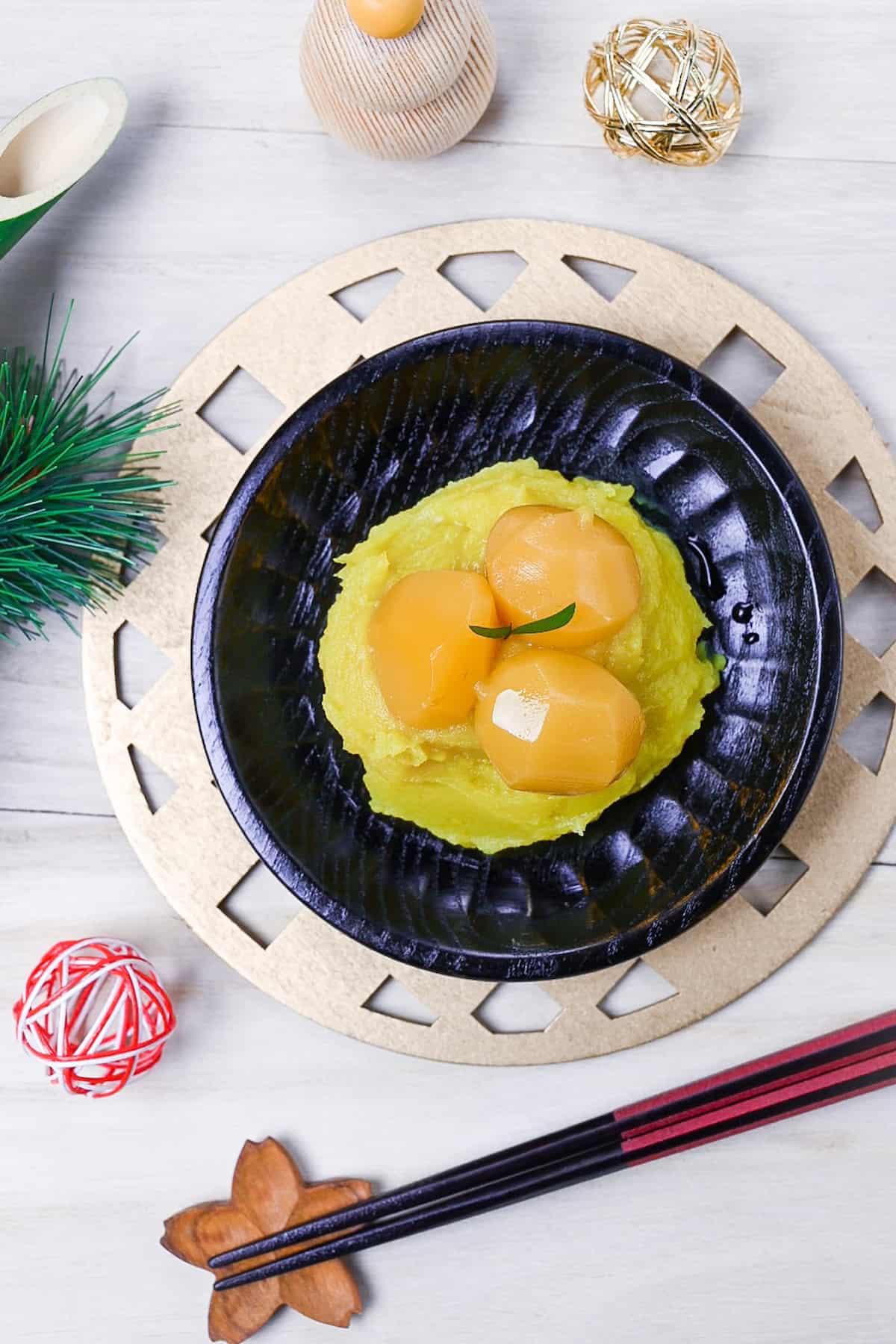
Visual Walkthrough & Tips
Here are my step-by-step instructions for how to make Kuri Kinton at home. For ingredient quantities and simplified instructions, scroll down for the Printable Recipe Card below.
Start by washing the sweet potato and cutting it into thick slices. Peel the skin off each slice, you can peel it quite thickly because actually, the flesh near the skin has more fibers and this can ruin the smoothness when it’s mashed. Be sure to use a sharp knife and be careful of your fingers!
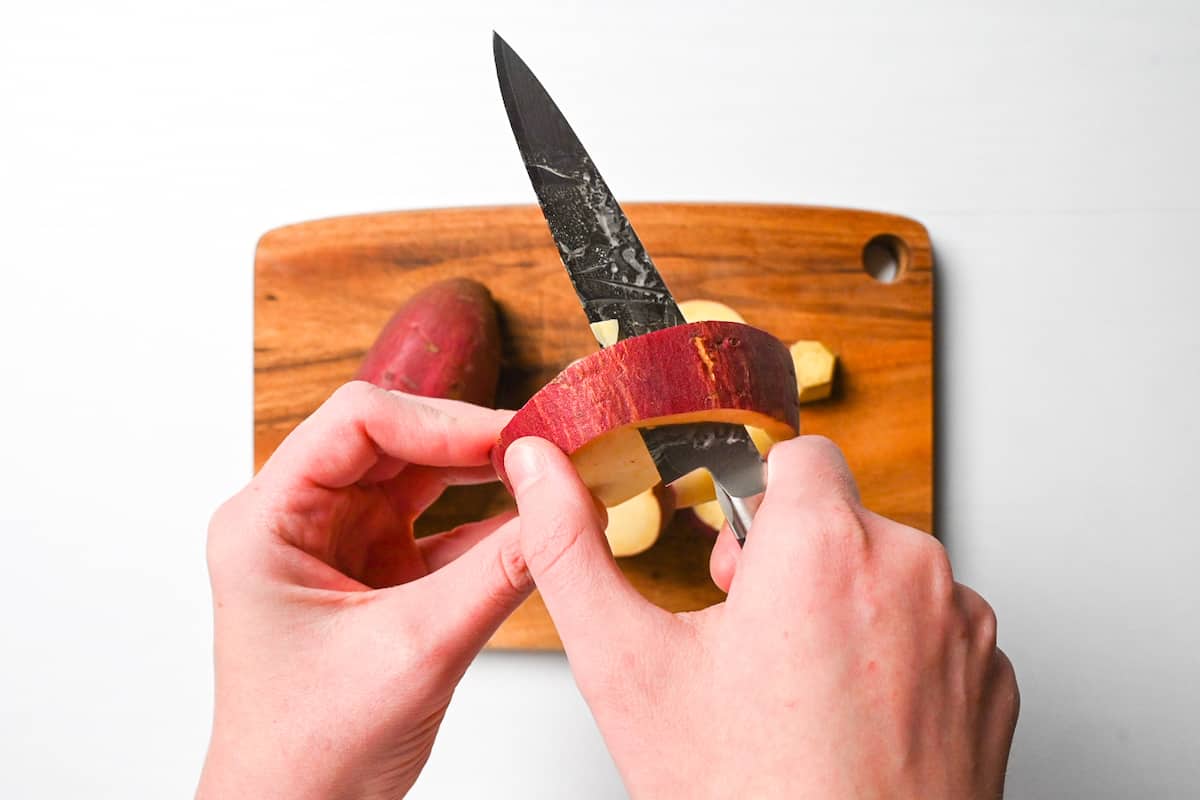
You can also cut the edges by placing the slices flat on a chopping board and roughly cutting around the outside.
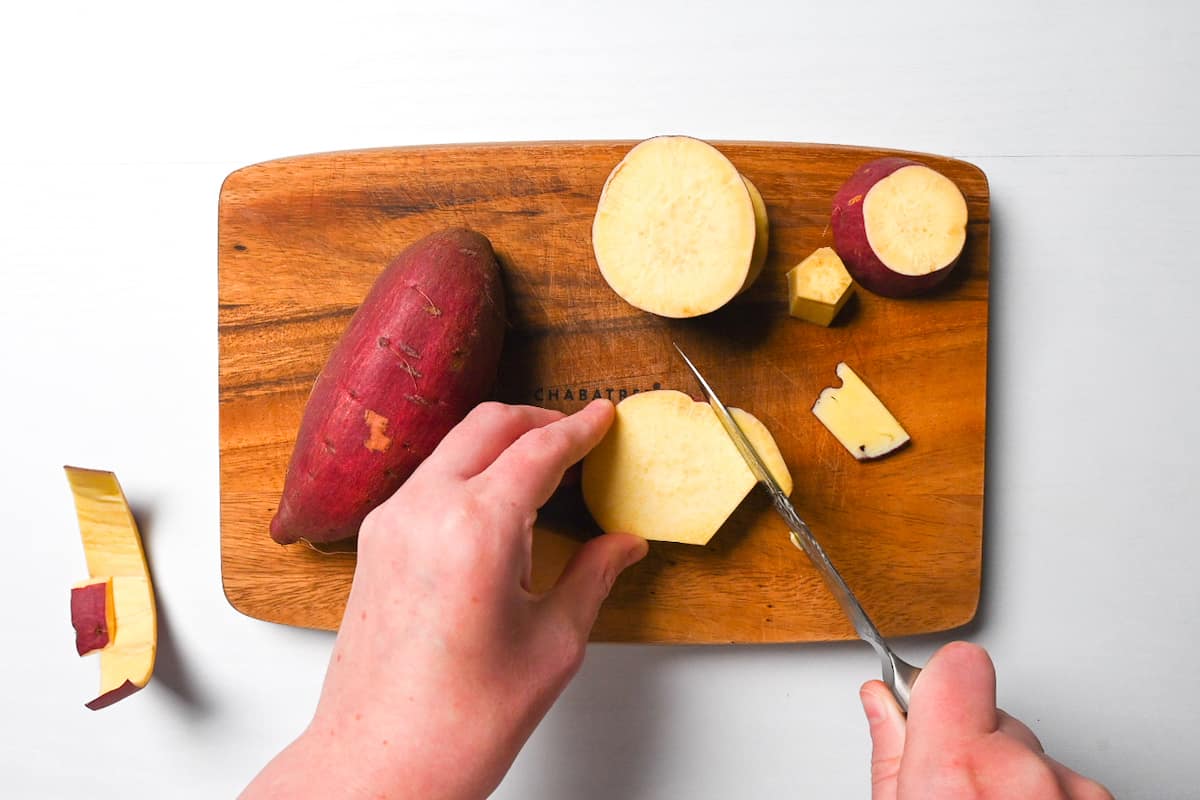
The flesh closest to the peel has stringy fibers, peel thickly to remove this for a smoother mash!
Next, soak the slices in cold water with a pinch of salt for 5 minutes. This is to help draw out the excess starch. Refrain from soaking for longer than 5 minutes as this can cause the sweet potato to lose its flavour.
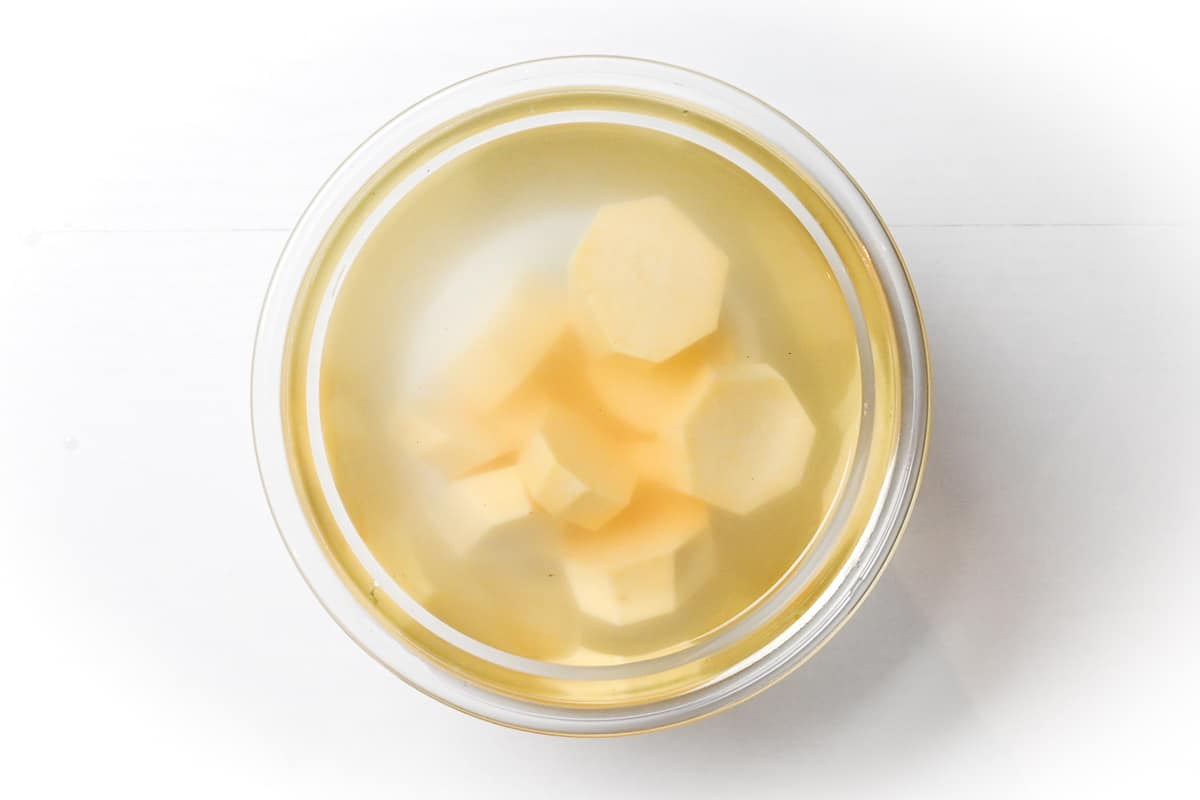
Once the soaking time is up, drain and wash the pieces under fresh water before placing them in a sauce pan.
Fill the saucepan with cold water until the sweet potato slices are fully submerged and then add the gardenia seeds OR a small amount of turmeric powder. (I used turmeric powder this time.)
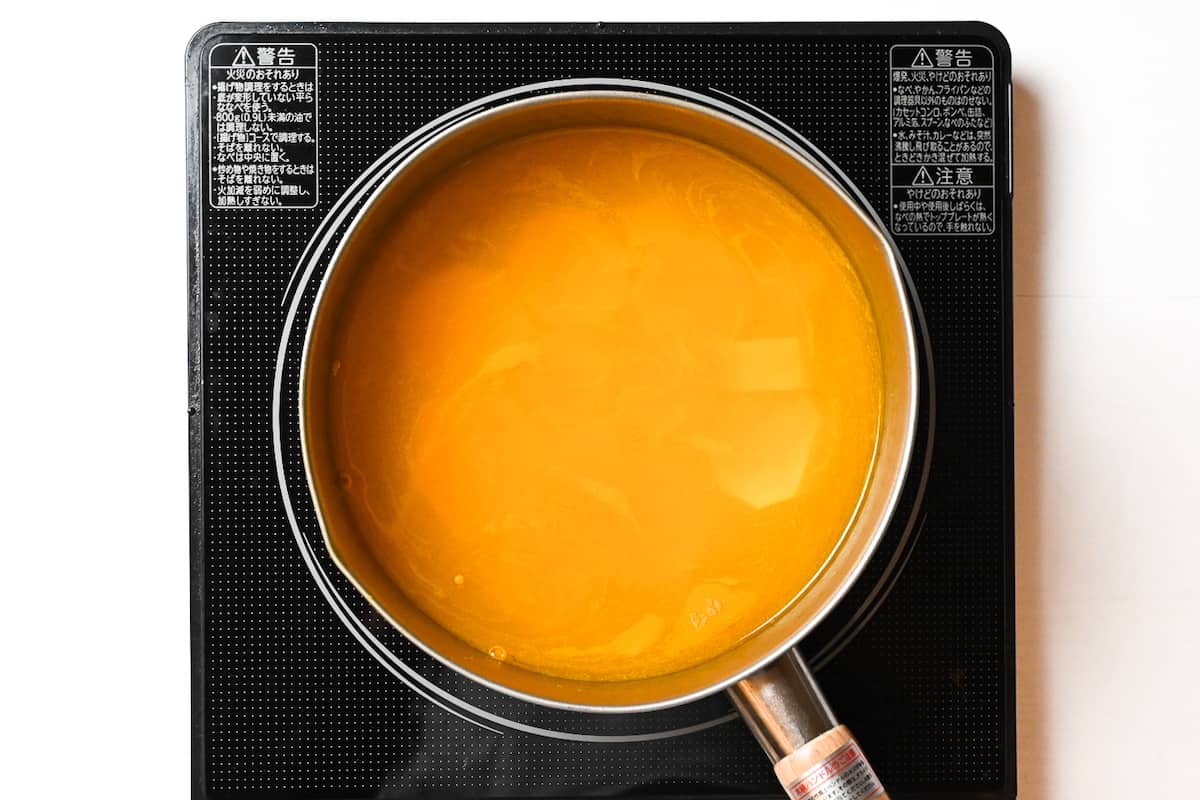
Boil the sweet potato until it’s soft enough to pierce with a fork. This usually takes about 20-25 minutes.
If you boil the water first and then add the potatoes, the outer edges will cook too quickly and start to fall apart. For even cooking, start with the sweet potato in cold water and bring it to a boil.
Turn off the heat, drain the water out and place the pieces back in the pan.
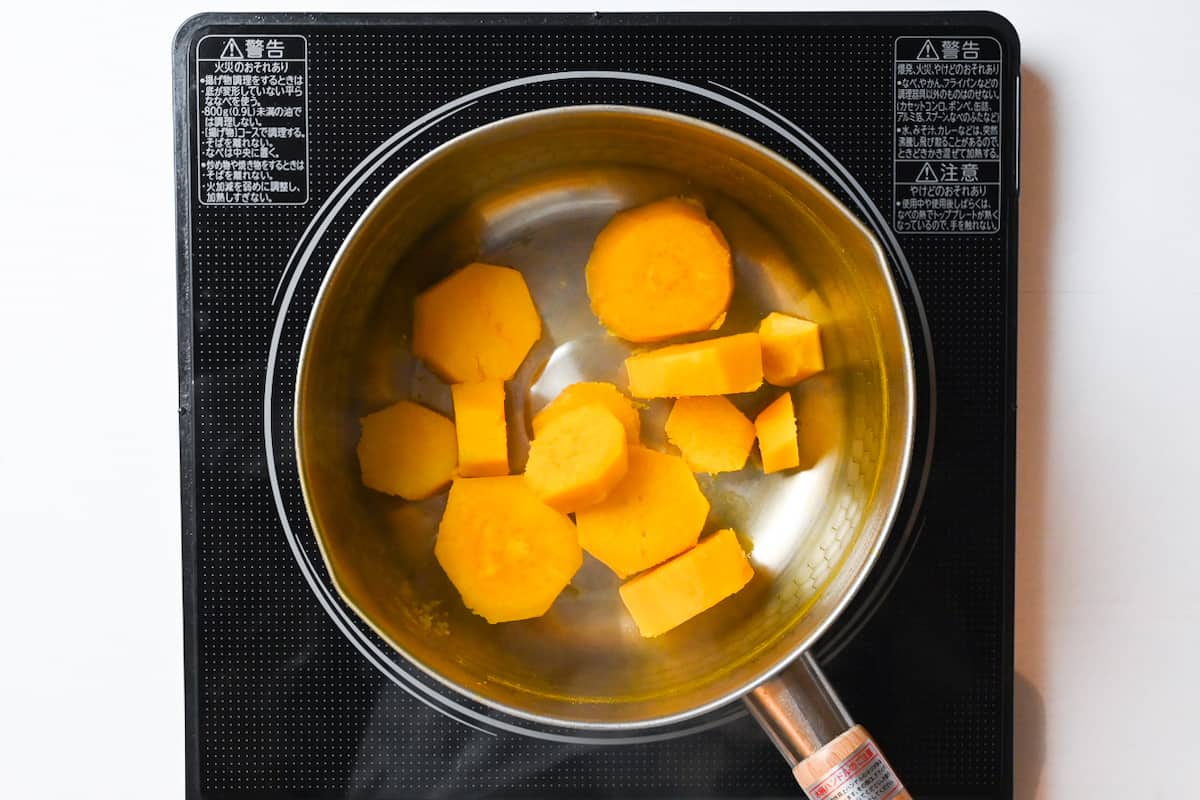
Mash thoroughly.
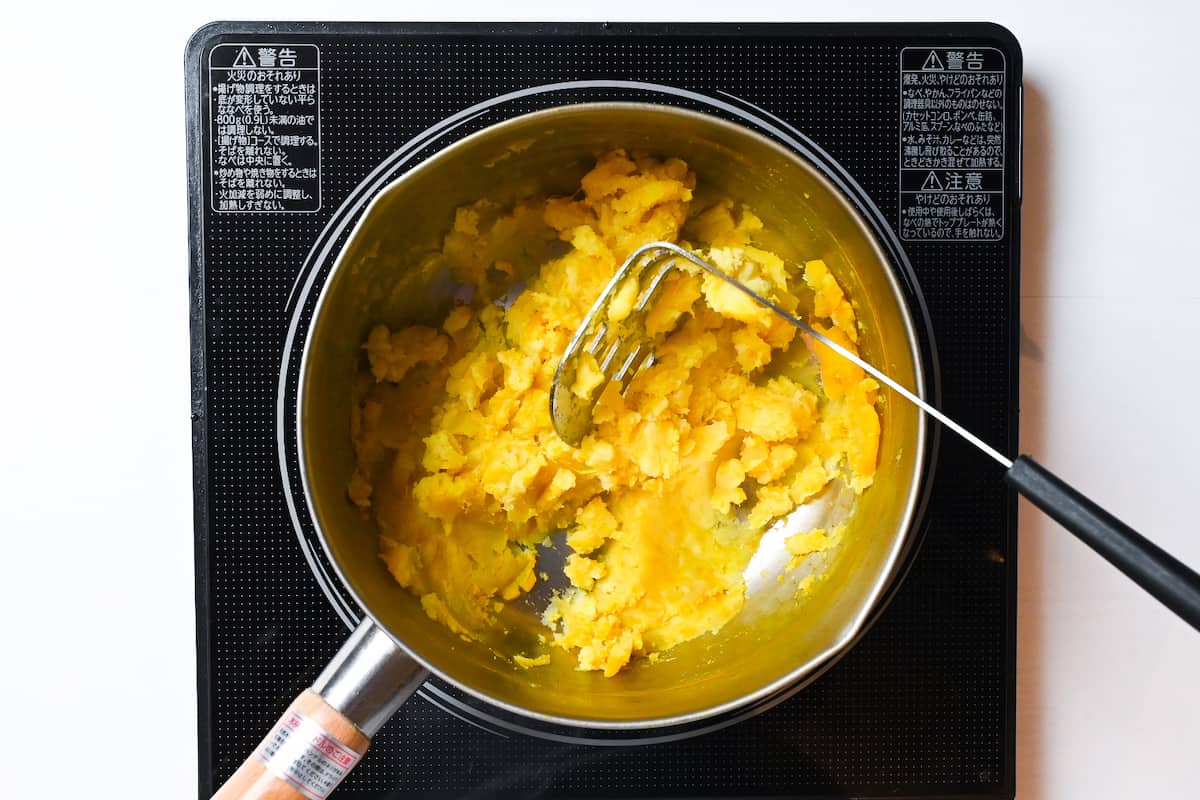
To ensure a completely smooth mash, work it through a mesh sieve using a spatula. It’s an optional step but it’s worth it!
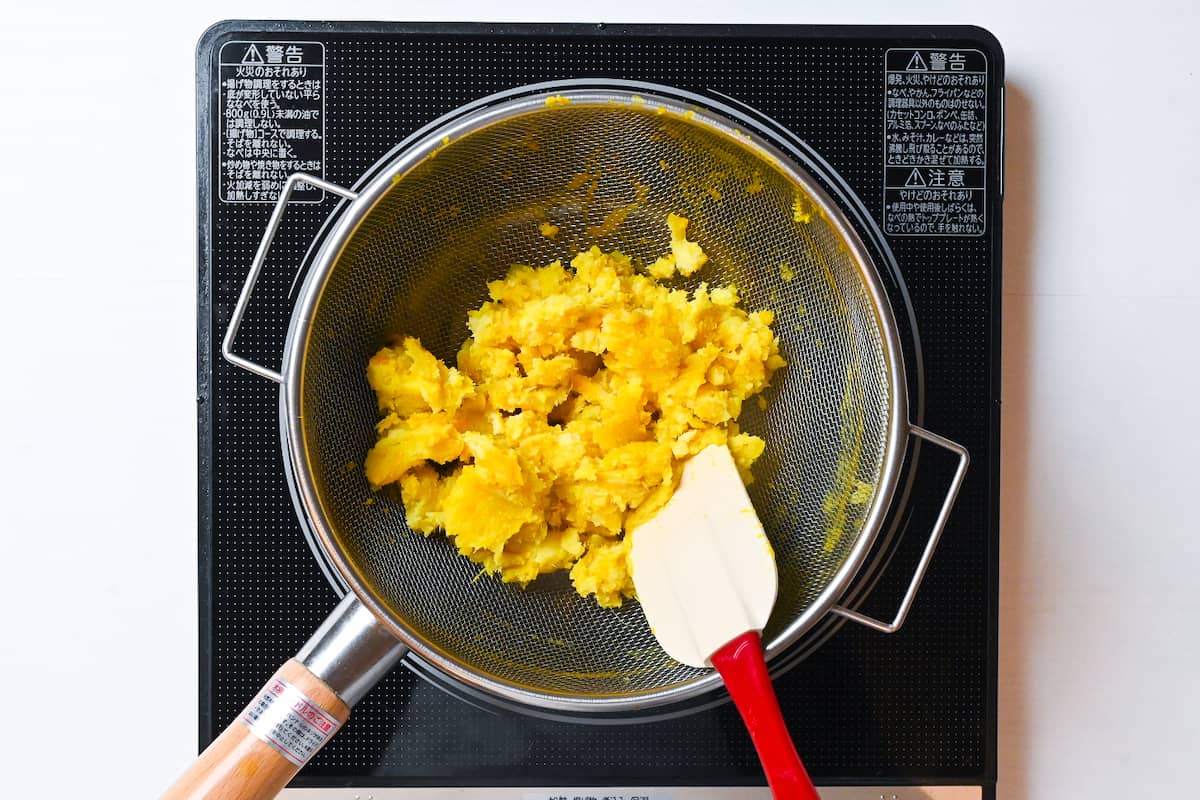
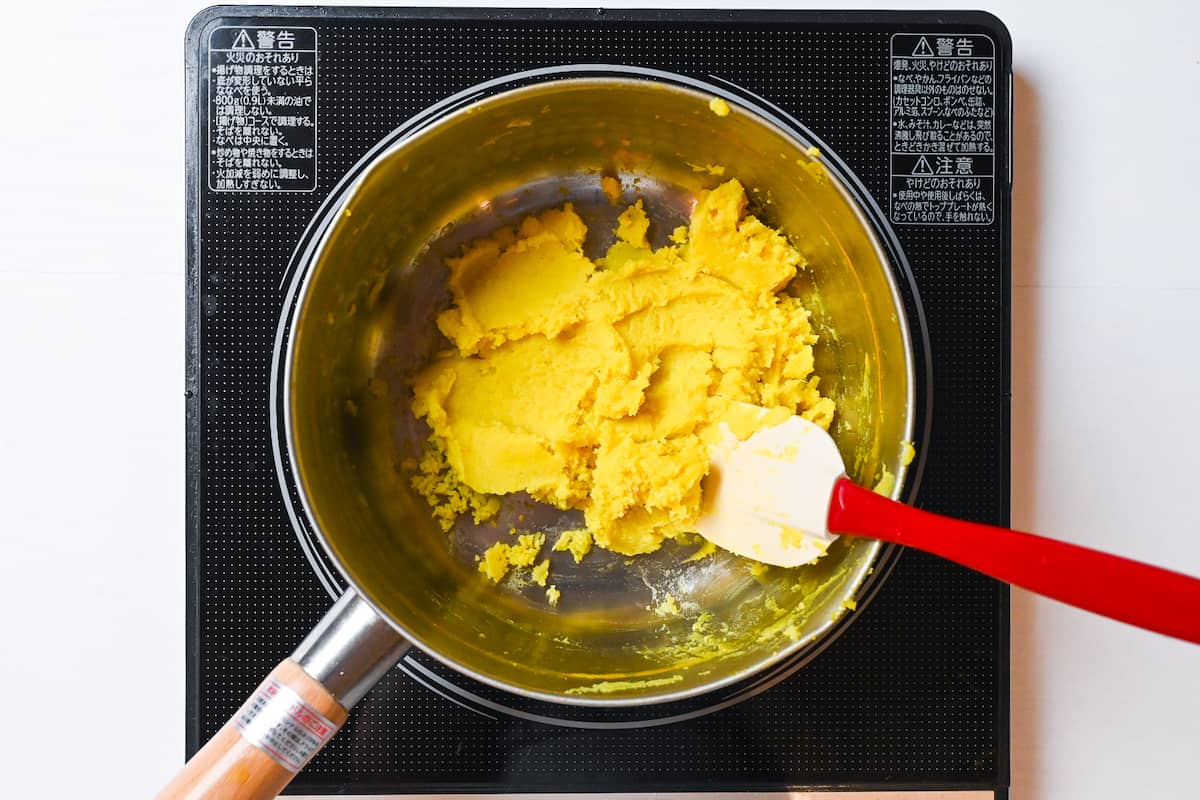
Add the sugar while it’s still warm and mix until it’s dissolved.
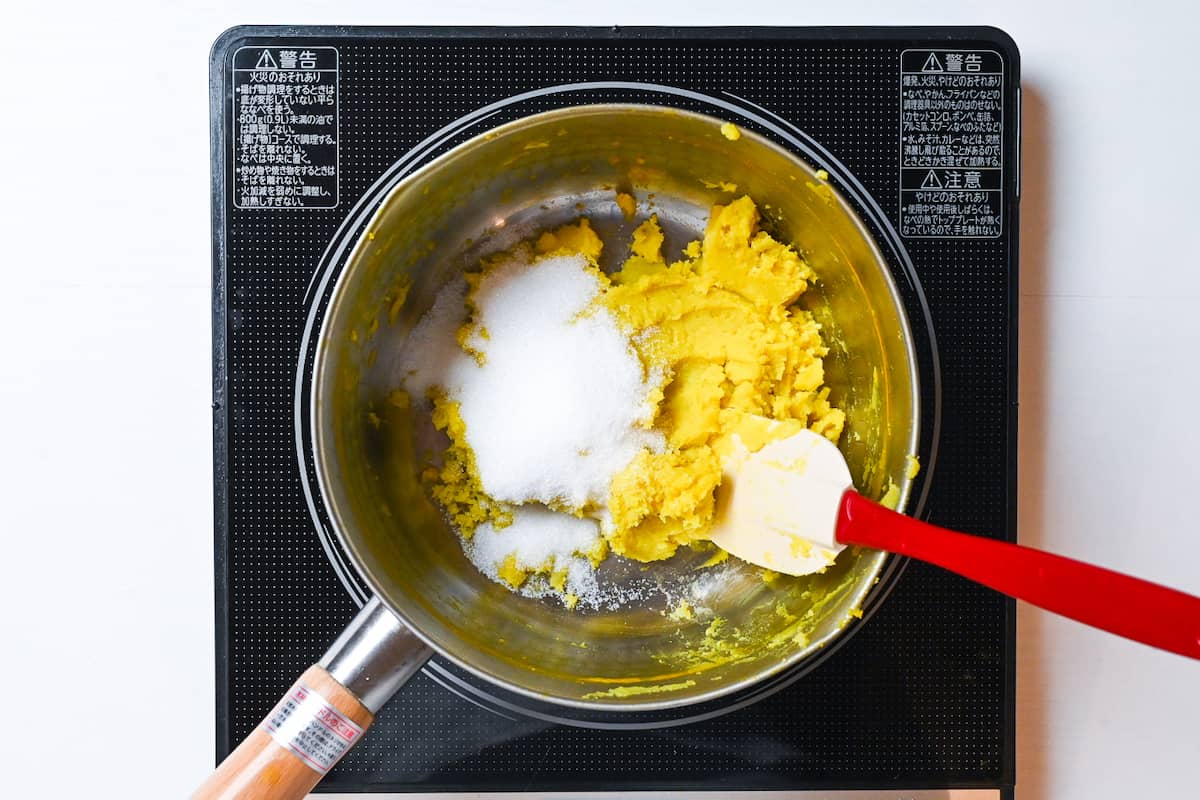
Once it’s fully incorporated, turn the heat on low and add the salt, mirin, honey, and syrup from the chestnuts. For my recipe, I use 4 tbsp of candied chestnut syrup. Kuri Kinton is supposed to be very sweet to help preserve it.
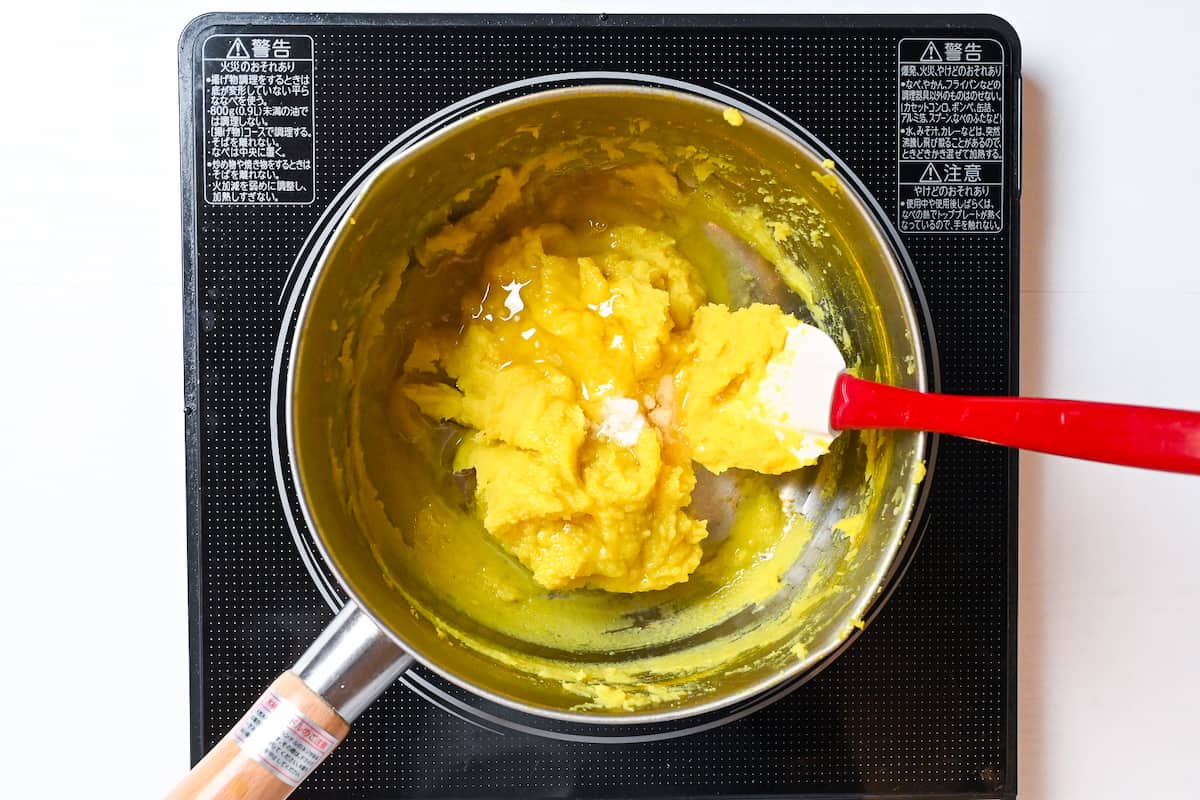
To prevent burning, mix continuously over low heat until the mixture is warmed through. This will help evaporate excess moisture and cook off the alcohol in the mirin. I mix it over the heat for about 5 minutes.
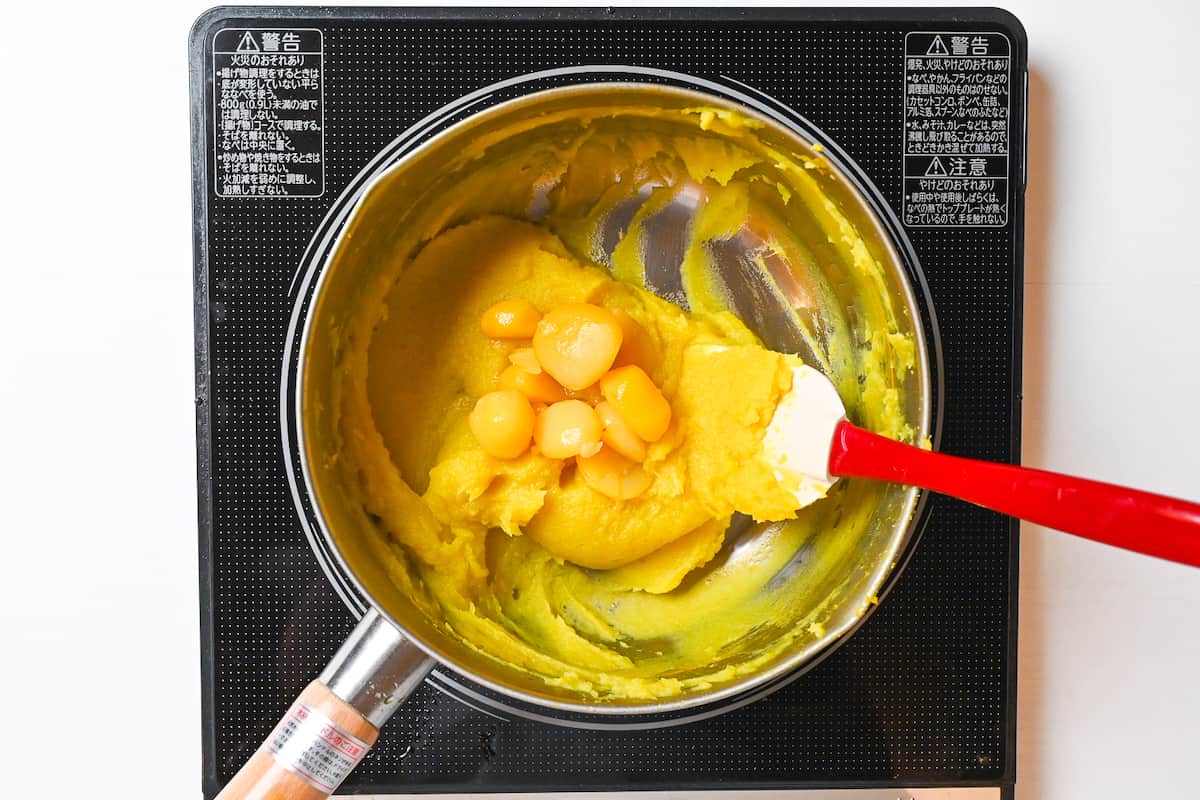
Once it’s smooth and sticky (but not wet) add the chestnuts and mix them in. Some excess syrup from the chestnuts might leak into the mixture, so continue to stir over the heat for another minute or so.
Scoop the kuri kinton into a container with an airtight lid. Leave to cool to room temperature before placing the lid on top and transferring it to the fridge.
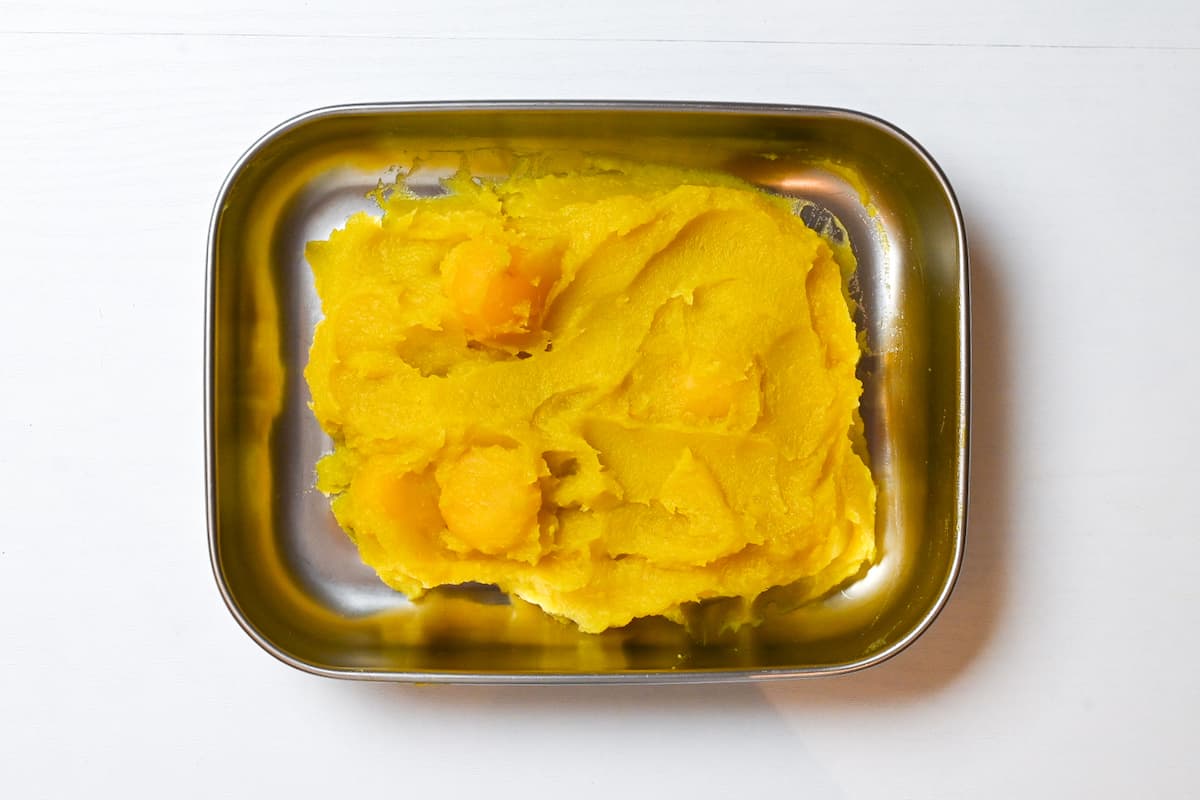
Kuri kinton is best served chilled or at room temperature.
Enjoy!
Jump to Full Recipe Measurements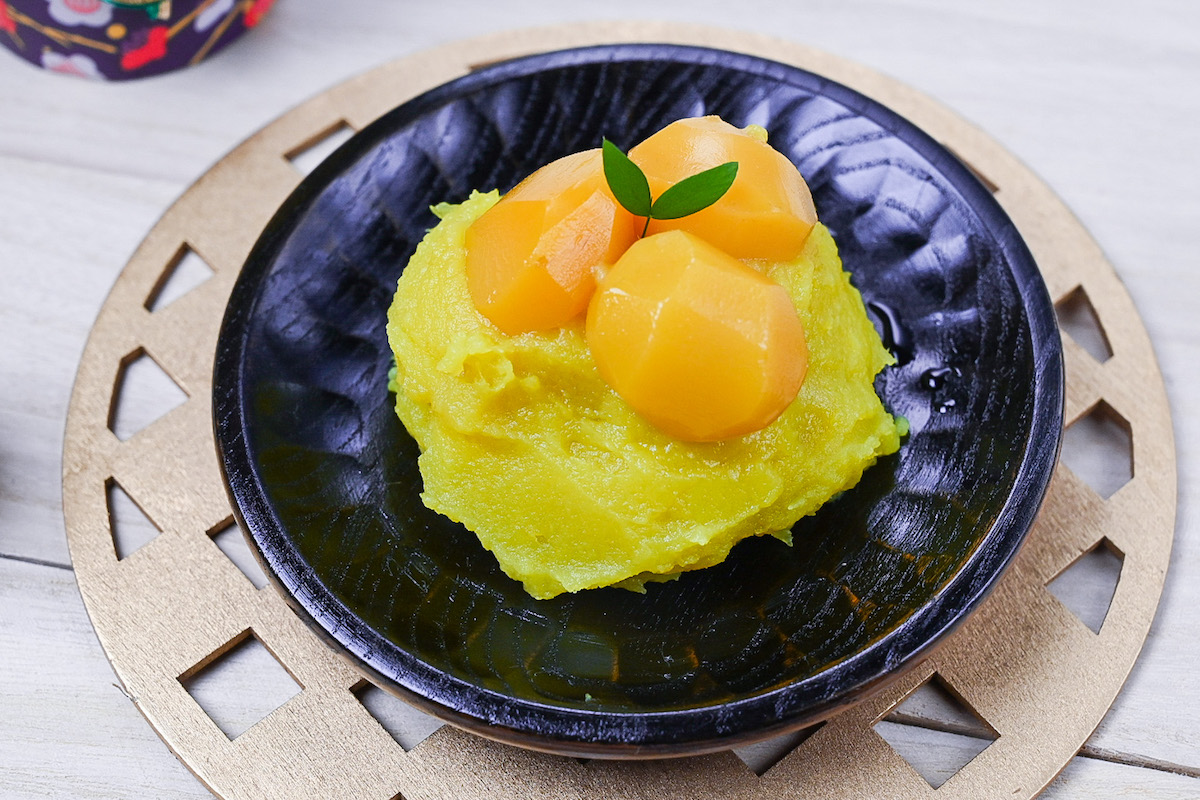
Storage
Kuri Kinton should be stored in a sealed container in the fridge and consumed within 3-5 days. For longer storage, freeze for up to 1 month. For best results, defrost in the refrigerator overnight.
Storage summary
Room temperature – 1-2 hours.
Refrigerated – 3-5 days.
Frozen – Up to 1 month.
FAQ
There are actually two kinds of Kuri Kinton in Japan. The original Kuri Kinton is a type of “wagashi” (Japanese style sweet) from Gifu prefecture. It’s made with sweet chestnut paste that has been squeezed in a tea cloth and shaped into a chestnut shape. It is known for its elegant and autumnal taste which highlights the flavour of the chestnuts. It can be written as 栗きんとん or 栗金飩.
On the other hand, the Kuri Kinton served during New Year is usually made with sweet potatoes and boiled chestnuts in syrup. It is very sweet and has a sticky texture, completely different to the Kuri Kinton sweet from Gifu. It is also written differently, and its name in Chinese characters is “栗金団” which means “golden dumplings” or “golden futon”.
“Kuchinashi no Mi” (くちなしの実) are dried fruits from the Cape Jasmine flower (also known as Gardenia seeds or pods). They are usually broken in the middle with a knife, and added to the water when boiling the sweet potatoes to make Kuri Kinton.
Using Kuchinashi no Mi naturally colors the sweet potato, making them a vibrant yellow without any additional flavor. The yellow represents prosperity and good fortune, and is an important element of Japanese Osechi Ryori (New Year’s Dishes).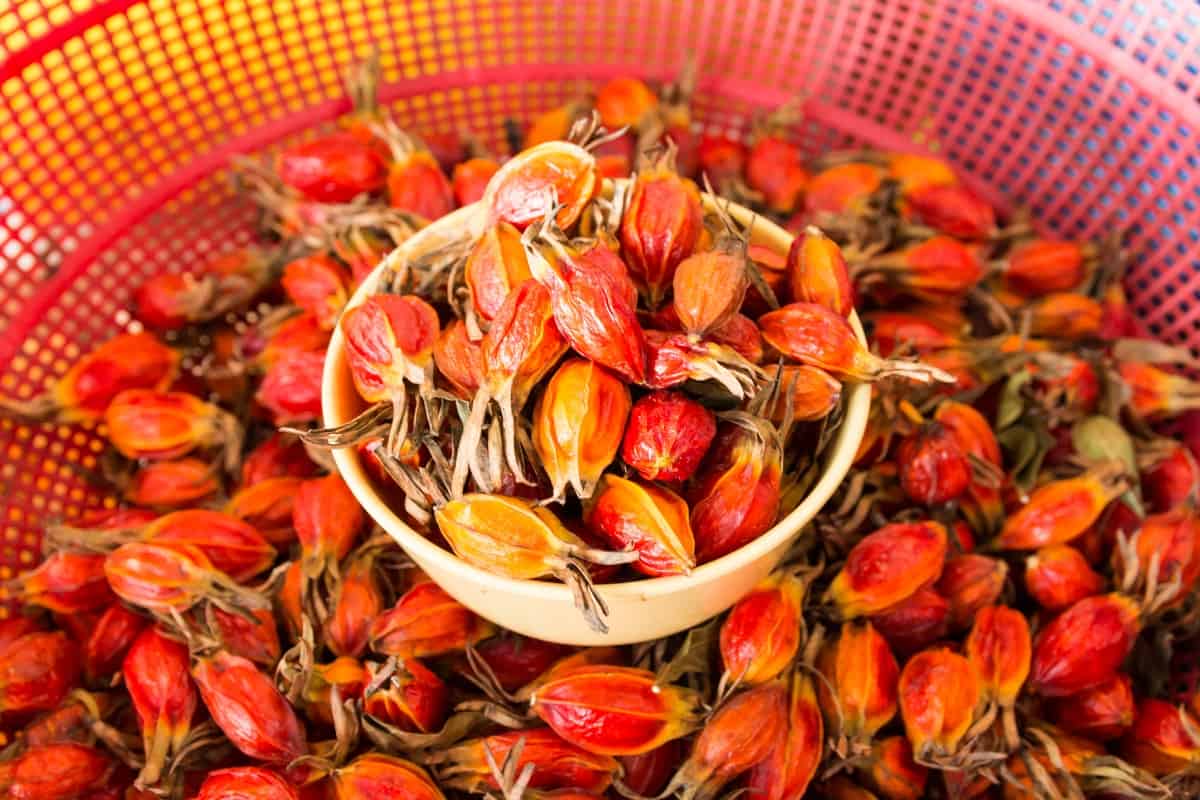
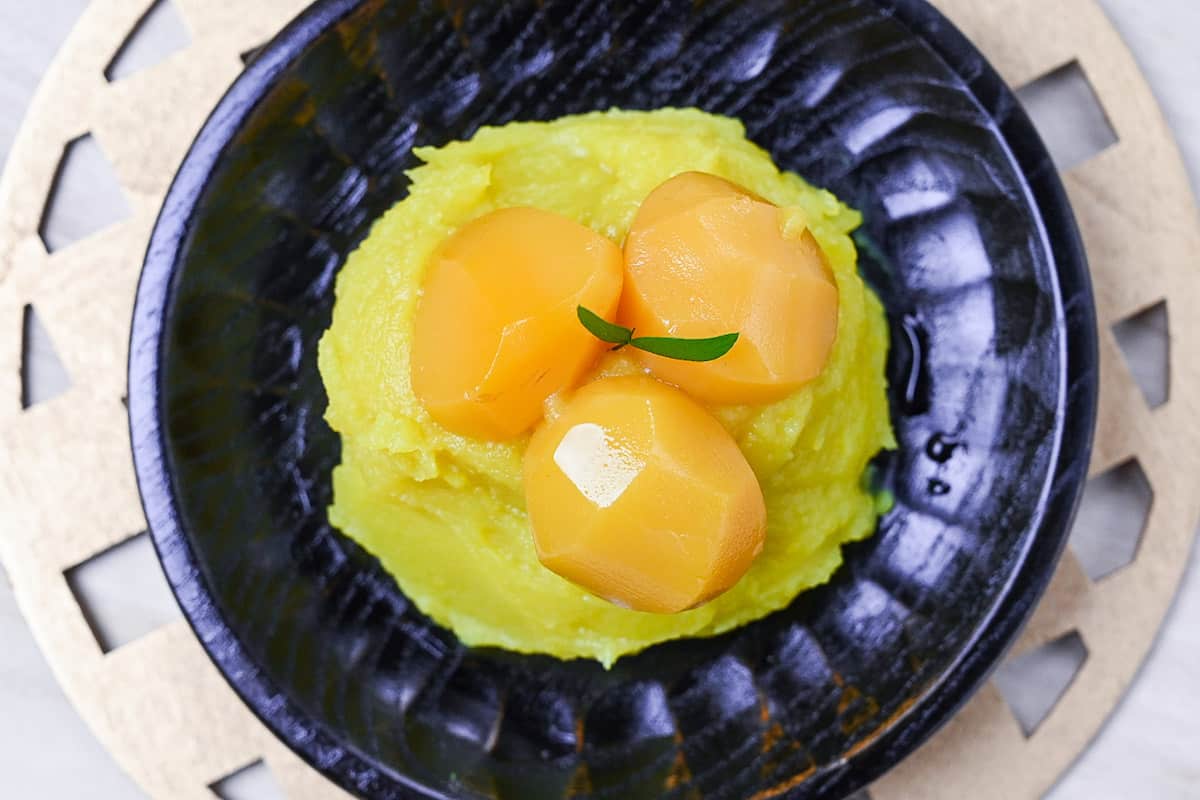
I hope you enjoy this Kuri Kinton recipe! If you try it out, I’d really appreciate it if you could spare a moment to let me know what you thought by giving a review and star rating in the comments below. It’s also helpful to share any adjustments you made to the recipe with our other readers. Thank you!
More Sweet Potato Recipes
- Sweet Potato Dessert
- Candied Sweet Potato (Daigaku Imo)
- Sweet Potato Tempura (3 ways!)
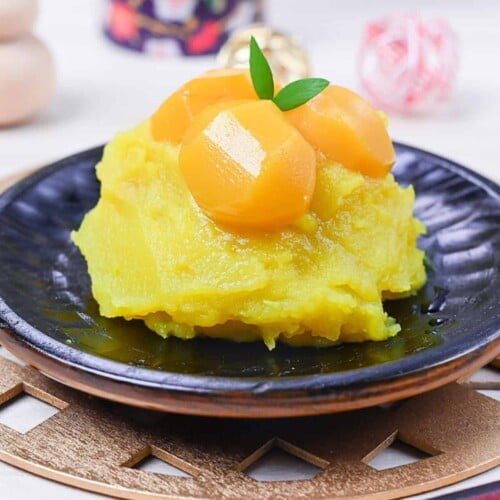
Kuri Kinton (Japanese Sweet Potato Mash with Candied Chestnuts)
Ingredients
- 500 g Japanese sweet potato (satsumaimo) approx 2 medium size before peeling
- 1 pinch turmeric powder 1 pierced cape jasmine/gardenia pod
- 60 g white sugar
- ½ tsp salt
- 1 tbsp mirin
- 1 tbsp honey
- 200 g chestnuts in syrup (kuri kanroni)
My recommended brands of ingredients and seasonings can be found in my Japanese pantry guide.
Can’t find certain Japanese ingredients? See my substitution guide here.
Instructions
- Wash 500 g Japanese sweet potato (satsumaimo) and cut them into thick slices. Peel the skin off of each slice thickly using a knife (not a peeler) to remove the fibrous edges.

- Soak the slices in a bowl of cold water and a pinch of salt for 5 minutes, then drain and wash with fresh water to remove the excess starch.

- Transfer the slices to a saucepan and fill with cold fresh water until completely covered. Mix in 1 pinch turmeric powder (or place pierced gardenia pods in a tea infuser) and place the pan on the stove.

- Heat on medium, bring to a rolling boil and cook until soft and easily pierced with a fork. (Approx 20-25 minutes.) Once cooked, remove from the heat and drain the water.

- While it's still hot, mash with a potato masher until smooth.

- Optional step: To make the sweet potato extra smooth, work the mash through a mesh sieve using a spatula. Transfer it back to the sauce pan.

- Add 60 g white sugar while it's still warm and mix until it's dissolved into the mixture.

- Turn on the heat to low and add ½ tsp salt, 1 tbsp mirin, 1 tbsp honey and 4 tbsp of syrup from the candied chestnuts. Mix continuously over the heat for about 5 minutes.

- Add 200 g chestnuts in syrup (kuri kanroni) on their own (don't add any more syrup) and mix until evenly distributed, stir over the heat for a further 1-2 minutes.

- Transfer the mixture to a sealable container and allow to cool before storing in the fridge.

- Best served chilled or at room temperature. Enjoy!
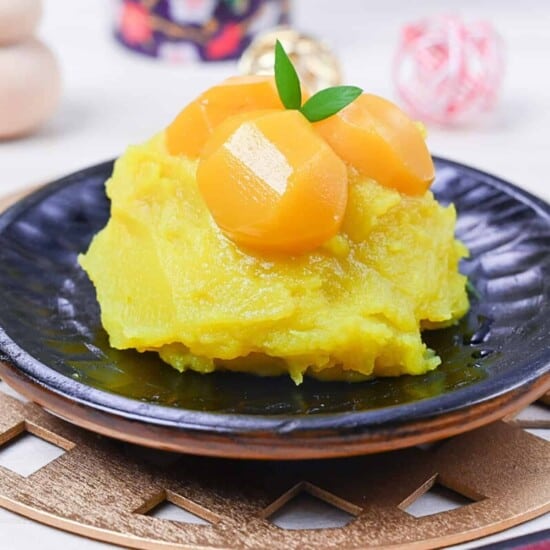


Leave a rating and a comment